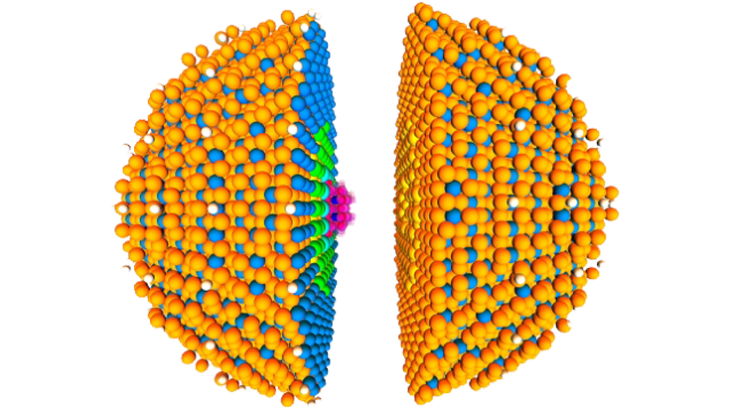Combined codes for chemistry research

Andrew Logsdail, at the time postdoc to Professor Richard Catlow, Head of the MAPs facility with the Department of Chemistry at UCL, has been using the Iridis distributed memory computing cluster to help develop new methodologies for chemistry calculations.
Logsdail’s team focus on research into catalysis and chemistry defects, with a view to creating better software to be used in the development of tools such as catalytic converters, and photovoltaic and photocatalytic cells as used in solar power.
To do so, they perform vast calculations, and need software that can handle their needs. Their aim has therefore been to integrate their own code – ChemShell, a computational chemistry environment – with the FHI-aims quantum chemistry software developed by researchers in the Fritz Haber Institute in Berlin, and the Technical University of Munich. FHI-aims has been specifically designed to offer efficient parallelisation on supercomputers up to tens of thousands of cores, and the UCL team is keen to build that scalability into its own system.
Scalable software
“We want to create software that is more scalable, and more efficient, to allow us to get the most out of a computer like Iridis – or even supercomputers like ARCHER and HECToR. The more efficient the software, the more calculations we can run and the better research we can do,” Dr, Andrew Logsdail, University College London at the time.
The team is working to fully integrate and hard code FHI-aims into ChemShell. “The big advantage of hardcoding the integration is that it lets us pass the MPI environment around, to that we can use the parallelism more effectively,” he says. Iridis has been vital as a test environment throughout the process, allowing the team to test the integration of the software, and the scalability of the combined product. The integration has been – and continues to be – challenging, Logsdail says, but will be worthwhile in the long run.
“Previous implementations of what we’re trying to do, in quantum chemistry, just don’t scale that well, so this will let us scale more efficiently”
Dr Andrew Logsdail, formerly University College London
The newly merged, scalable software will allow the team to calculate chemical properties in an isolated environment. In essence, the team want to avoid periodicity – the infinite repetition of a fragment of bulk material – in their research, to allow a clearer view of what it happening within just one repeating unit of the environment. “By removing that repetition, you take away some complexities, which basically means you can study the fine detail more precisely,” Logsdail says.
Efficient catalysts
The combined environment has already been put to some use. Logsdail says the team looked at reactive sites within silicate systems, for use in decomposing greenhouse gases. The hope is that, through greater understanding of chemical reactions, better, more efficient catalysts can be designed.
“In the long term, once we’ve got this set up configured, what it gives us is the feasibility to do more calculations. Ultimately, if things scale better, you can use supercomputers more efficiently and get things done more quickly. It gives us a better variety of test environments to use – and the more results you have, the more trustworthy you can feel your results are,” says Logsdail.
The authors would like to acknowledge that the work presented here made use of the IRIDIS High Performance Computing facility provided via the Centre for Innovation (CfI). The CfI is formed from the universities of Bristol, Oxford, Southampton and University College London.
Published in the Journal for Chemical Physics, ‘Embedded-cluster calculations in a numeric atomic orbital density-functional theory framework’

